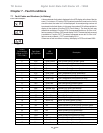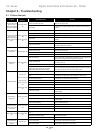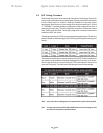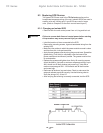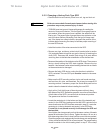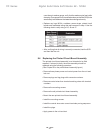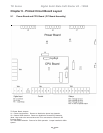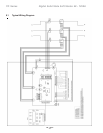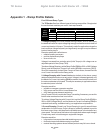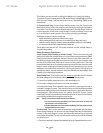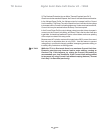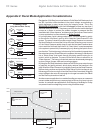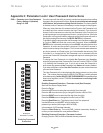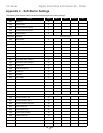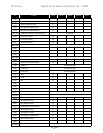
TD - Series
- 43 -
TD Series Digital Solid State Soft Starter 48 - 1250A
Appendix 1 - Ramp Profile Details
Four Different Ramp Types
The TD Series offers four different types of starting ramp profiles. Simply select
the one that best matches your motor / load requirements.
1. Voltage Ramping is the most reliable starting method, since at some point
the starter will reach an output voltage high enough to allow the motor to draw full
current and develop full torque. This method is useful for applications where the
load conditions change frequently and significantly enough to require different
levels of starting torque.
Examples where this is effective are:
• material handling conveyers
• positive displacement pumps
• drum mixers, etc.
Voltage is increased from a starting point (Initial Torque) to full voltage over an
adjustable period of time (Ramp Time).
To achieve Voltage Ramping, set the Ramp Profile (F010) to 0001 or 0003 (Voltage
Ramp), and the Maximum Current Limit setting (F014) to maximum (600%).
Since this is essentially Locked Rotor Current on most motors, there will be little
or no Current Limit effect on the Ramp profile.
2. Voltage Ramping with Current Limit works similarly to the above, except
adds an adjustable maximum current output. Voltage is increased gradually until
the Maximum Current Limit setting (F014) is reached, then held at this level until
the motor accelerates to full speed. This may be necessary in applications where
the electrical power is limited.
Examples would be:
• portable or emergency generator supplies
• utility power near the end of a transmission line
• utility starting power demand restrictions.
Using Current Limit will override the Ramp Time setting if necessary, so use this
feature when acceleration time is not critical.
To achieve Voltage Ramping with Current Limit, set the Ramp Profile (F010) to
0001 or 0003 (Voltage Ramp), and the Maximum Current Limit setting (F014) to
a desired lower setting, as determined by your applications requirements.
3. Current Ramping (Closed Loop Torque Ramping) is good for smooth linear
acceleration of output torque. Output voltage is constantly updated to provide
this linear current ramp, and therefore the available torque is maximized at any
given speed. The best use of this feature is for applications where rapid changes
in torque may result in load damage or equipment changes.
Examples would be:
• long overland conveyors where belt stretching may occur
• fans and mixers where blade warping is a problem
• material handling systems where stacked products may fall over or break.
Ramp 1 Ramp 2
1 Voltage Ramp Voltage Ramp
2 Current Ramp Current Ramp
3 Voltage Ramp Current Ramp
4 Current Ramp Voltage Ramp
Ramp Type
Setting
F010
Ramp
Profile
Selection



